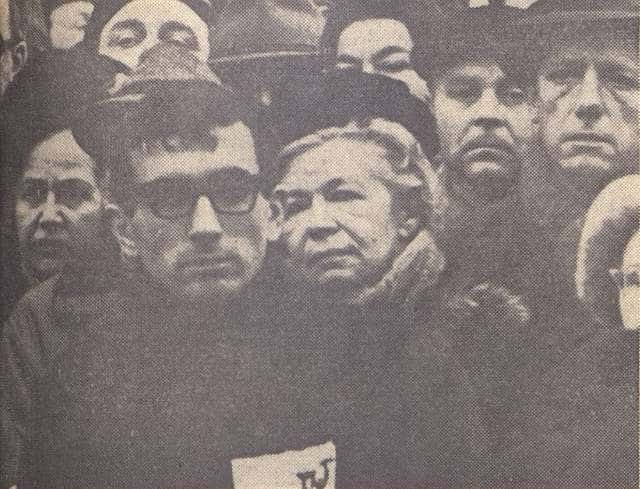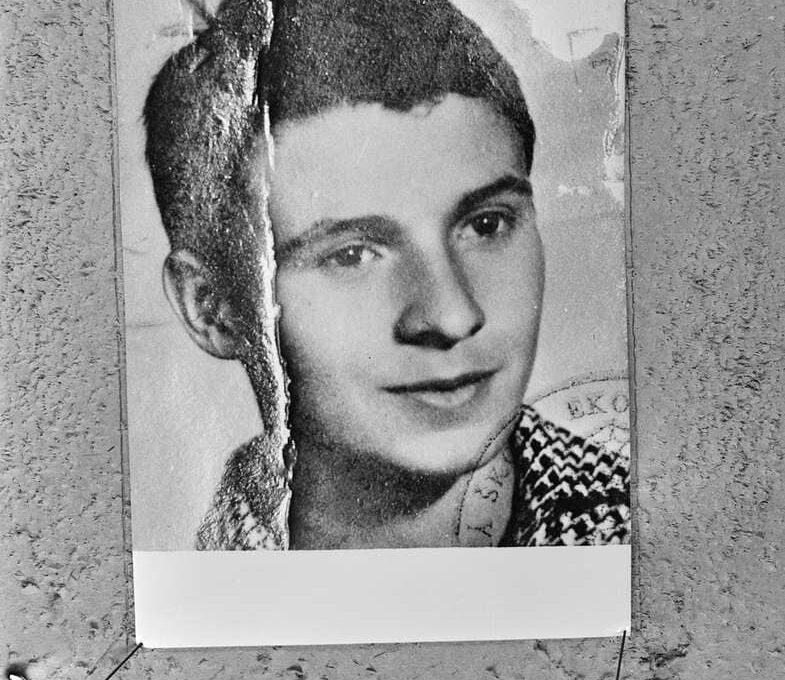Table of contents Show
The name Jan Palach stood out as a symbol of courage and resistance during the difficult times of the Czechoslovakia revolt against the Soviet occupation in the 1960s. In the end, communism in Czechoslovakia fell because of Jan Palach’s selfless deed, which sent shockwaves across the country.
This young student gave his life for his country at the tender age of twenty. He protested the repressive Soviet dictatorship on January 16, 1969, by setting himself on fire in Prague’s Wenceslas Square. Palach remained resolute in his fight for democracy and freedom even as he endured unbearable anguish.
The Czech people were inspired to rebel against the authoritarian rule when he stunned the nation by self-immolating. As a result of the protests and demonstrations sparked by Palach’s sacrifice, the cause of freedom and democracy gained enormous support.
Even after he passed away, Czech martyr Jan’s bravery continued. His example encourages everyone to fight for justice no matter how difficult the situation becomes. All those who battle for freedom and justice carry his legacy of bravery and selflessness with them.
Who was Jan Palach: The story of the Czech martyr

Jan Palach was a Czech scholar who became the face of resistance to the Soviet occupation of Czechoslovakia in 1968. Palach, who was born in Prague on August 11, 1948, grew up during a difficult period highlighted by the communist regime’s control over Czechoslovakia. He studied history and political economics at Charles University in Prague, where he grew increasingly disillusioned with the authoritarian system.
A major turning point in Palach’s life occurred in August 1968, when Warsaw Pact soldiers invaded Czechoslovakia to put down the Prague Spring reforms. The invasion dashed dreams for democracy and enforced harsh communist rule over the country. Palach was very upset by the loss of liberty and the harsh suppression of opposition, and he felt forced to act.
On January 16, 1969, Czech martyr Jan carried out a demonstration that reverberated throughout Czechoslovakia and beyond. He lit himself on fire in Prague’s Wenceslas Square as a symbolic act of opposition to the communist dictatorship and Soviet occupation. Despite serious burns, Palach lived for three days before succumbing to his injuries on January 19, 1969.
Palach’s self-immolation stunned the country and generated significant indignation, both domestically and internationally. On January 25, 1969, his funeral became a large anti-government march, with thousands of mourners honoring his heroism and sacrifice. Palach’s act of defiance sparked a new wave of resistance against the communist system, galvanizing opposition to Soviet brutality.
In the years that ensued, Jan Palach became a symbol of resistance and a martyr for liberty and democracy. His legacy is still celebrated in Czech society, with streets, squares, and memorials named after him. Jan Palach’s narrative is a sobering reminder of the human cost of totalitarianism, as well as the ongoing struggle for freedom and justice.
Understanding the Burning Legacy of Jan Palach and His Act of Protest
Jan Palach’s burning himself in 1969 echoed not just throughout Czechoslovakia, but also around the world, creating a flaming legacy that continues to be honored and commemorated today. Palach’s choice to set himself on fire in Wenceslas Square was more than a desperate act of rebellion; it was a purposeful and calculated gesture designed to stir up the nation’s conscience and instill a spirit of resistance against the tyrannical communist dictatorship and Soviet occupation.
Palach’s deed, motivated by a deep sense of despair and rage in the aftermath of the 1968 Warsaw Pact invasion, was both an individual sacrifice and a collective call to action. By selecting such a dramatic and violent method of protest, Palach hoped to shock society out of its lethargy and indifference, forcing people to confront the harsh reality of Soviet dominance and the decline of freedom and democracy.
Palach’s self-immolation was not an impulsive act, but rather a methodically planned act of rebellion. In the days preceding his protest, he wrote multiple letters and declarations explaining his motivations and urging solidarity in the fight against totalitarianism. His willingness to give his life for the cause of freedom demonstrated his unshakeable dedication to the ideals of democracy and human rights.
Palach’s protest had a deep and immediate impact. His act of self-sacrifice sparked a fresh wave of opposition to the communist system, prompting countless more to speak out against injustice and oppression. His burial, which became a major anti-government demonstration, was an important turning point in Czechoslovakia’s history, signaling a renewed desire to reject Soviet dominance and struggle for democratic reform.
Jan Palach’s Funeral Marks a Nation’s Mourning
Jan Palach’s burial in January 1969 symbolized Czechoslovakia’s collective sorrow and rejection of the communist regime and Soviet occupation. Palach’s burial was a powerful expression of popular displeasure and support after his self-immolation in Wenceslas Square days earlier shocked the nation and provoked protests.
The Jan Palach funeral in Prague became a large anti-government protest with thousands of mourners. Despite the state’s attempts to restrict the gathering, individuals from all backgrounds joined together to honor Palach and protest the regime.
Palach’s funeral procession through Prague was sad, with mourners carrying banners, flowers, and candles. Challenging the dictatorship and demanding freedom and democracy, many disregarded the government’s ban on public gatherings.
Students and activists carried Palach’s flag-draped coffin, signifying Czechoslovak solidarity in times of trouble. Palach was buried at Olsany Cemetery after a large assembly of grief and defiance.
The government’s harsh response to Palach’s funeral fueled dissent and strengthened Czechoslovak determination. The mourners refused to be silenced or intimidated by riot police and security troops.
The regime experienced international condemnation and domestic turmoil after Palach’s funeral, prompting calls for political reform and an end to Soviet rule. Palach’s death was tragic, but his burial inspired a new generation of activists to fight tyranny and persecution.
How the Sacrifice of Jan Palach Shook the World and Created a Ripple Effect
Jan Palach’s 1969 self-immolation to protest Czechoslovakia’s communist rule had repercussions worldwide and domestically. The effects of Jan Palach’s death were:
Global Attention
Jan Palach’s self-immolation opposing the Soviet invasion of Czechoslovakia sparked international media coverage and political discussions in Eastern Europe.
Resistance
Palach’s sacrifice inspired solidarity movements and protests worldwide. In other countries experiencing comparable obstacles, his daring gesture inspired freedom and human rights activists.
Impact on Czech Society
Palach’s self-immolation brought Czechs upset by the Soviet occupation together in sympathy. His heroism inspired Czechs to demand political freedom and fight authoritarianism.
Government Crackdown
The Czechoslovak government arrested and imprisoned activists and increased censorship and monitoring after Palach’s death. The opposition Palach’s sacrifice had started was unquenchable.
Change Catalyst
Palach’s bravery inspired freedom and democracy seekers to defy and persevere. His death galvanized opposition to Soviet rule and led to the 1968 Prague Spring.
Courage legacy
Jan Palach’s legacy shows the power of individual courage and sacrifice against injustice. His unflinching devotion to his principles inspires generations of activists and campaigners worldwide to stand up for what is right, even in despair.
Commemoration and Remembrance
In the Czech Republic and beyond, memorials, monuments, and cultural events including the museum of communism in Prague celebrate Jan Palach and his narrative for future generations. His legacy as a freedom and democracy fighter gives encouragement to those who fight for a better world.
Influence on Art and Culture
Palach’s sacrifice has inspired many works of literature, art, and film, amplifying his message and spreading his tale. His creative works continue to encourage others to fight oppression and tyranny.
Reflection on History
Jan Palach’s death raises questions about Czechoslovakia’s history and Eastern Europe’s struggle for democracy. His brave conduct reminds us of the sacrifices made for liberty and justice and warns against authoritarianism and tyranny.
Jan Palach Memorial as a Symbol of Defiance and Remembrance
After Palach’s untimely death, a bronze cross on granite was built as a simple yet striking tribute. The memorial, which bears Palach’s name and self-immolation date, invites visitors to honor the brave young man who died for justice.
The Jan Palach Memorial honors Palach’s defiance and inspires human rights and political freedom advocates. Over time, the memorial has symbolized Czech resistance against oppression and the Czech people’s resiliency.
The Jan Palach Memorial also educates future generations about Palach’s sacrifices for freedom and democracy. The memorial helps future generations remember Palach through guided tours, educational programs, and commemorative activities.
The Jan Palach Memorial honors a brave young man who fought tyranny and injustice, offering hope and remembrance. Visitors from around the world pay their respects at the site, reminded of the power of human action to inspire change and the significance of standing up for what is right, even against seemingly insurmountable odds.
The Impactful Film That Reveals the Story of Jan Palach’s Life
“The Burning Bush” is a powerful film about Jan Palach, a young Czech student whose 1969 self-immolation symbolized resistance to dictatorship. This Agnieszka Holland-directed film follows Palach from university student to national martyr, giving light on Czechoslovakia’s volatile political climate under Soviet rule.
The film is set during the Prague Spring when the Soviet Union and its allies brutally suppressed democratic reform. After the Prague Spring, Czech society was filled with dread and oppression as residents struggled to live under an oppressive dictatorship. “The Burning Bush” powerfully depicts this atmosphere through dramatic storytelling and riveting acting.
Jan Palach’s film centers on Jan Palach, played by Viktor Zavadil with depth and delicacy. Palach shows viewers the inner agony of a young guy driven to desperate means by injustice. Palach contemplates setting himself on fire to protest the Soviet takeover, and the film explores his character and the psychological and emotional effects of his actions on himself and others.
After Palach’s death, Czech society was outraged and indignant, as shown in “The Burning Bush”. The film shows Palach’s self-immolation seismic impact on the national consciousness, from Prague’s large protests to the government’s repression.
“The Burning Bush” honors Jan Palach and the many others who died for freedom and democracy with its dramatic tale and great direction. Palach’s strength and determination remind viewers that individuals can alter the world and give hope in the darkest circumstances.





